Take Advantage of Business Time-Of-Use (TOU) Rate Periods

In 2019, your TOU periods changed. This means you can lower your costs by shifting more of your energy use away from these times:
As California continues to adopt cleaner resources to generate energy, the cost to deliver power throughout the day is changing. Energy is now less costly during midday and more costly in the late afternoon and evening. TOU peak periods have changed to reflect these times of day.
What is Time-Of-Use?
Our Time-Of-Use rates are part of a statewide initiative designed to keep the electric grid reliable—even when energy resources are in high demand.
All rates feature energy charges that vary based on the time of day, the day of the week, and the season. Some rates also include demand charges that are based on the maximum amount of electricity your business uses at once and during certain times of the day.
New Time-Of-Use Periods
June 1 to September 30 (4 months)
Standard Business TOU Periods
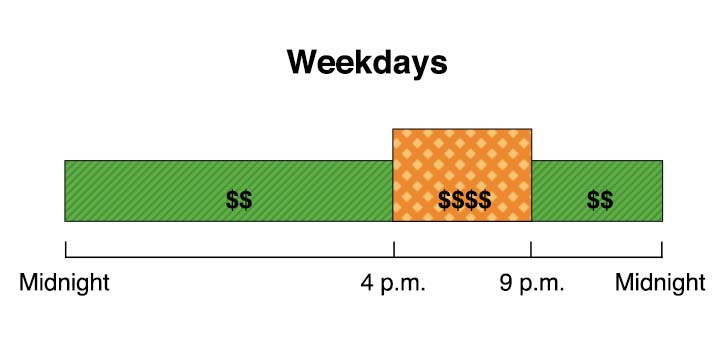
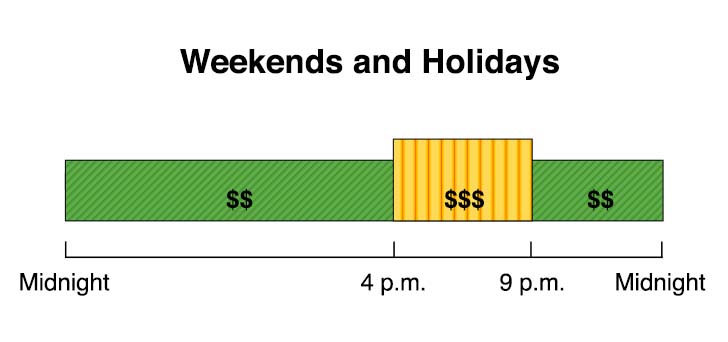
Agriculture & Pumping Optional TOU Periods
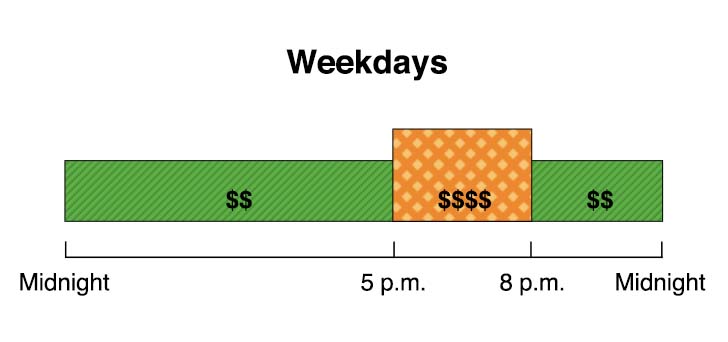
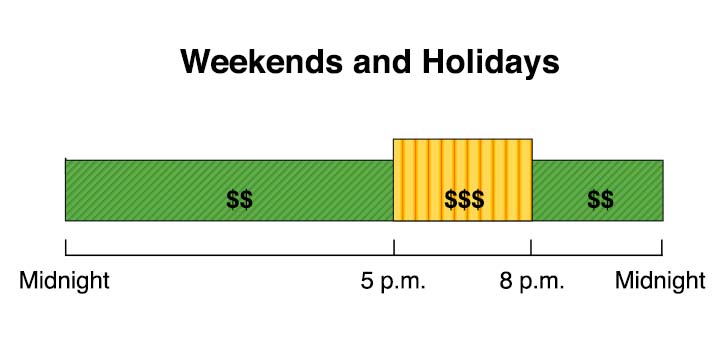

October 1 to May 31 (8 months)
Standard Business TOU Periods
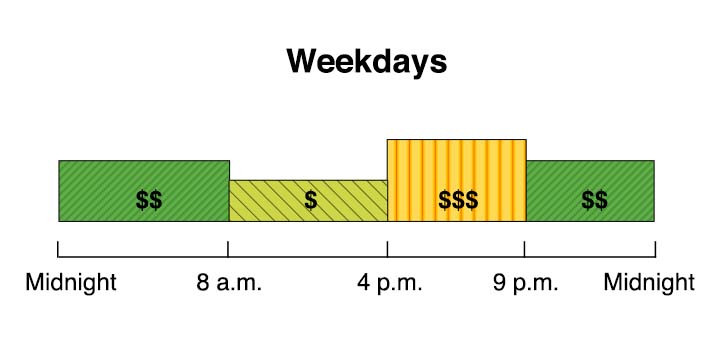
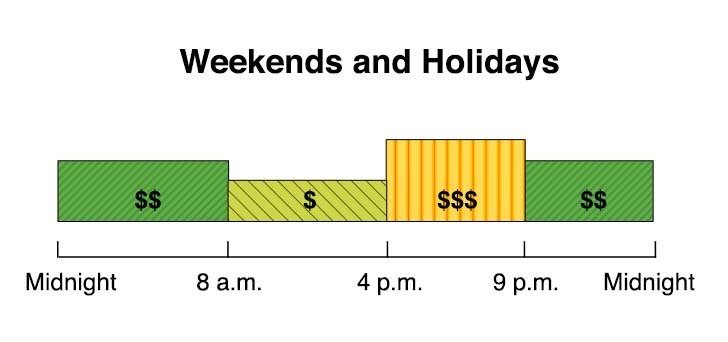
Agriculture & Pumping Optional TOU Periods
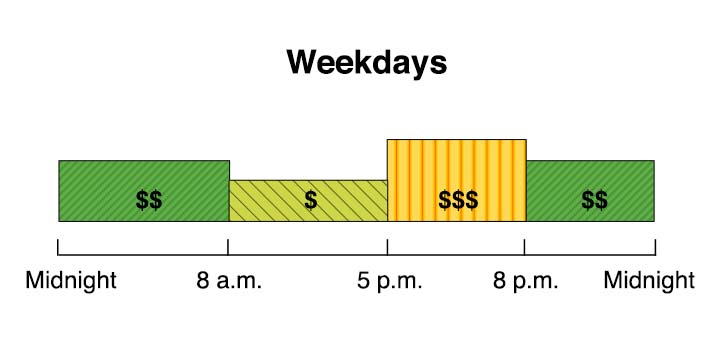
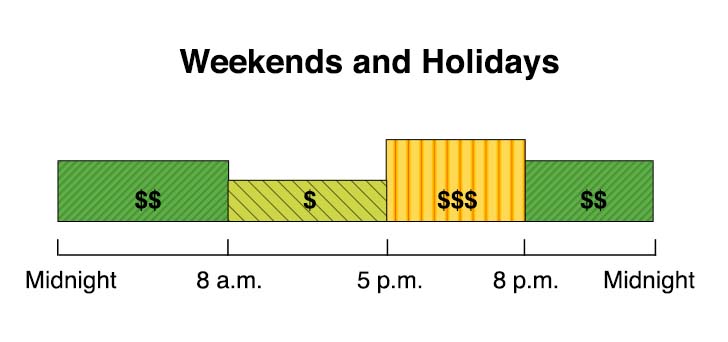

Text Alerts
Interested in getting TOU text alerts to help remind you of on-peak and/or lower cost periods? Sign up to get notified of peak periods through your text messages.
Sign Up Now >
Helpful Tools and Resources
Compare Rate Options
See how the new TOU peak periods will affect you. Our Rate Plan Comparison Tool will help you compare rates based on your actual usage.
Get the Facts About TOU
Our helpful fact sheet summarizes the upcoming changes to TOU. Find answers to frequently asked questions and energy-efficiency tips.

Tips to Lower Your Bills with TOU
off computers, turn off monitors and the printers.
during On-Peak hours.
See Energy Saving Solutions by Industry >
More Ways to Save for Agricultural Customers

Inside Edison: Craft Brewery Taps Into Electricity
Electric Brewing Co. in Murrieta uses SCE Time-Of-Use and Off-Peak periods to implement successful business strategy.

Pitigliano Farms Saves Big with TOU
This family farm switched to a TOU rate that matched their business needs and optimized their operations to save even more.
Common TOU Questions
TOU rates better align the cost of electricity to the time it is produced and the cost to deliver it when your business needs it. Pricing will generally be higher during summer weekdays in the late afternoons and evenings.
You can help lower your costs by shifting energy use from the more expensive On-Peak hours to the Mid-Peak, Off-Peak, and Super Off-Peak hours of the day when TOU pricing is lower.
Customers with behind‐the‐meter (BTM) solar generating facilities may be eligible to be served on TOU rates that retain discontinued TOU periods for 10 years from the date their systems were authorized to operate. To qualify for a discontinued TOU period, you must meet the following eligibility criteria:
● Your initial solar interconnection application must have been submitted by January 31, 2017. This deadline was extended for public agency customers to December 31, 2017.
● Your solar generating facility must be sized to offset at least 15% of your annual load.
One way to understand demand charges is to consider an example–imagine a single light bulb running for 10 hours. Now imagine 10 light bulbs running at once for 1 hour. Both situations use the same amount of electricity, but running 10 light bulbs at once increases the load demand on the electricity grid. This makes it more expensive for us to maintain the supply of energy. In some rate plans, your business can incur costs for the extra demand.
Demand charges are based on the highest amount of electricity used within any 15-minute period during your monthly period (referred to as “Facilities-Related Demand”) and/or on your highest amount of electricity used within a specific TOU period during your monthly billing period (referred to as “Time-Related Demand”). The unit of measurement used is kilowatts (kW). Energy charges are based on the total amount of electricity used in each TOU period within a billing cycle. For energy charges, the unit of measurement is the kilowatt hour (kWh).
Facilities-Related Demand Charges apply year-round and are calculated per kilowatt (kW) according to the highest recorded demand during each monthly billing period, regardless of season, day of week, or time of day.
Time-Related Demand Charges apply year-round and are calculated per kilowatt (kW) according to the highest recorded demand during On-Peak and Mid-Peak hours, non-holiday weekdays. On-Peak TRD charges apply during the summer and Mid-Peak TRD charges apply during the winter.

